

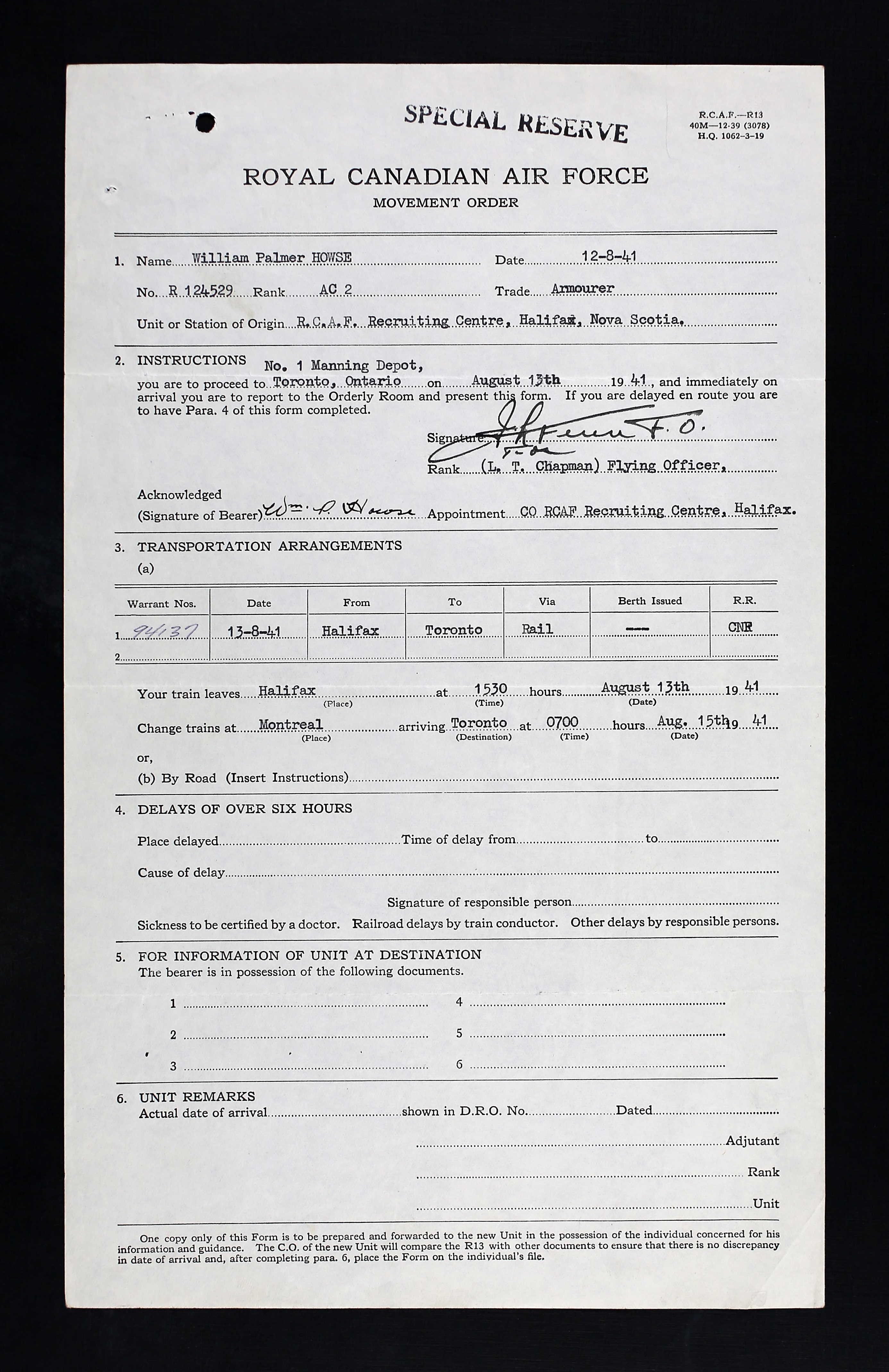
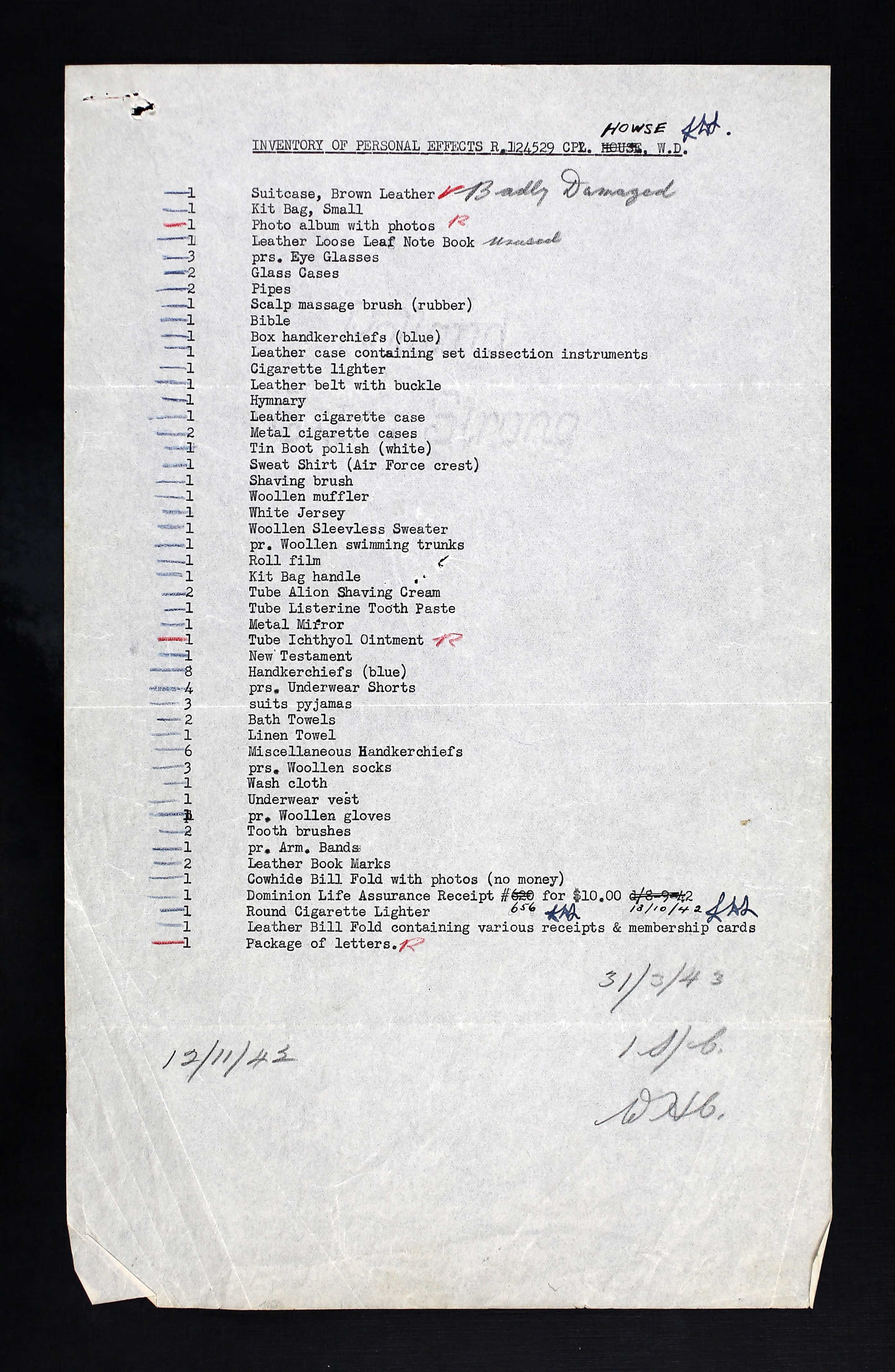
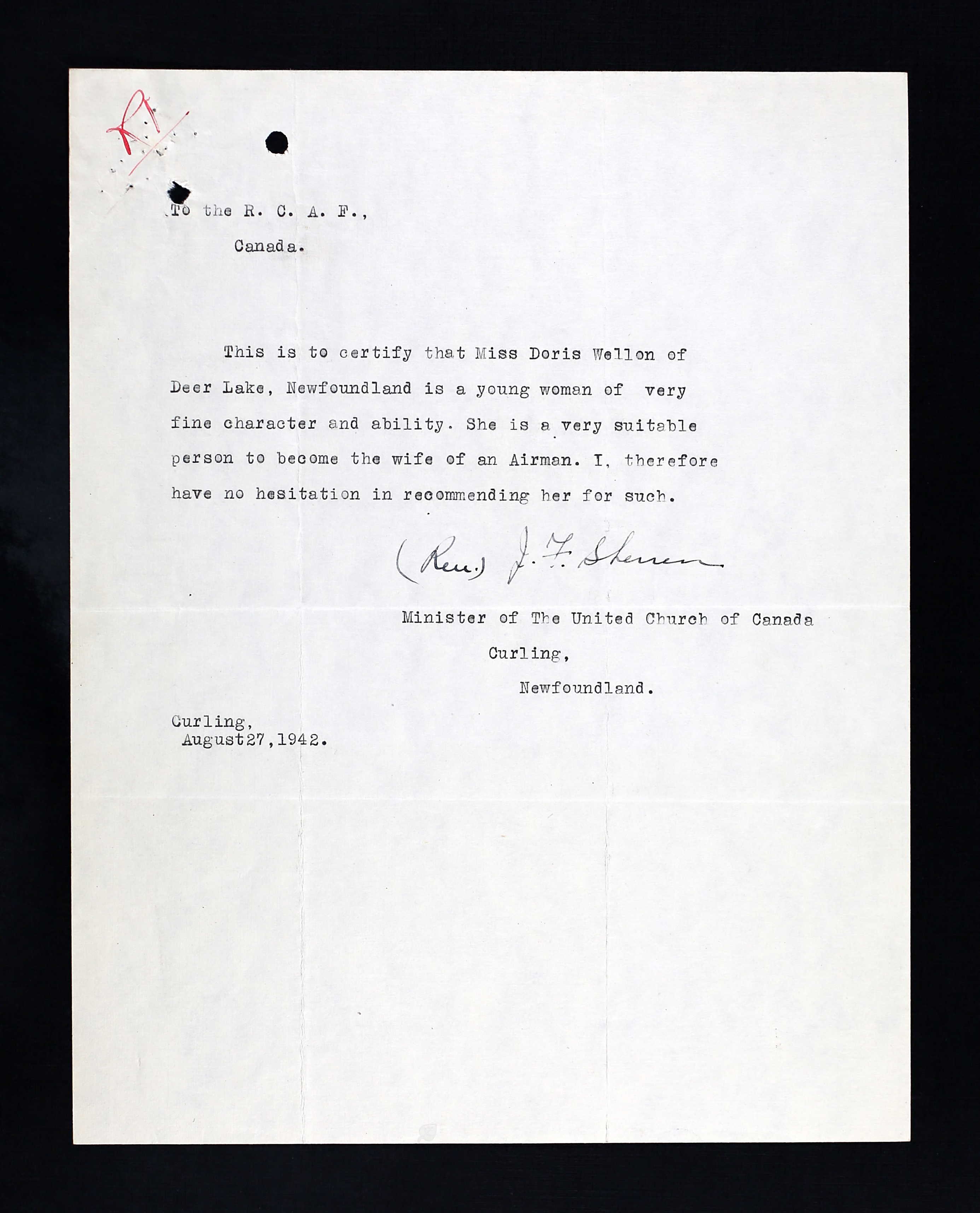
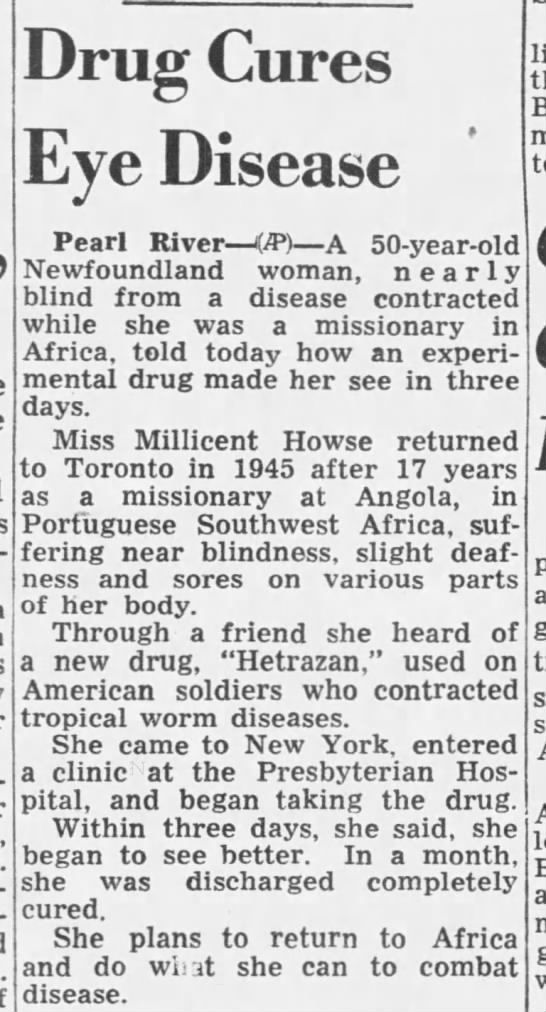
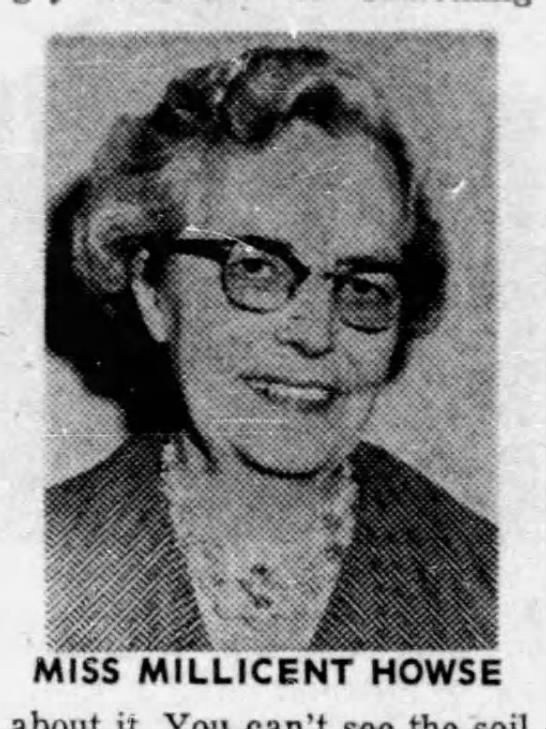
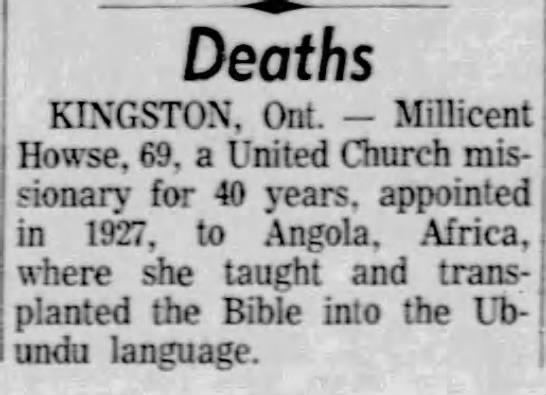
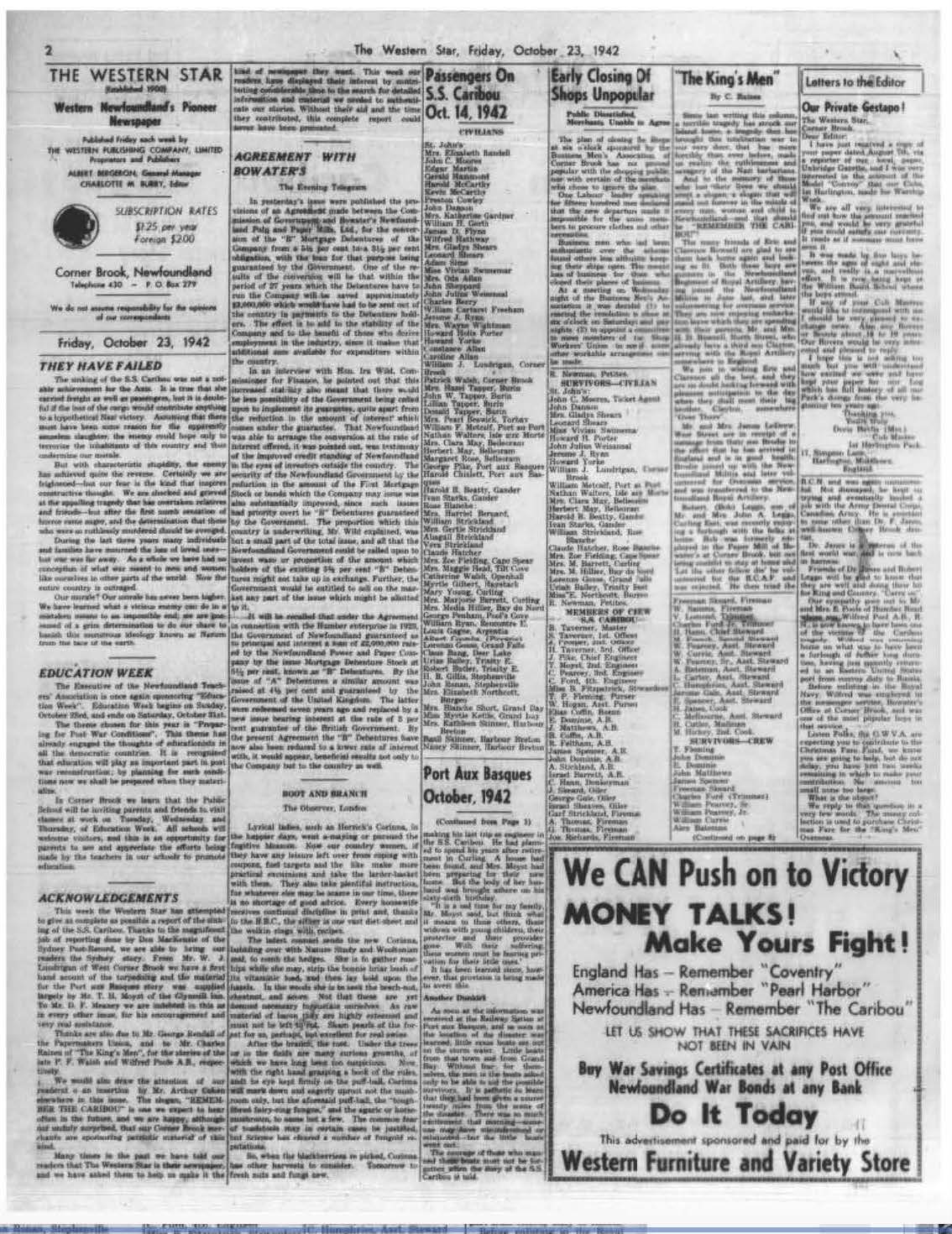
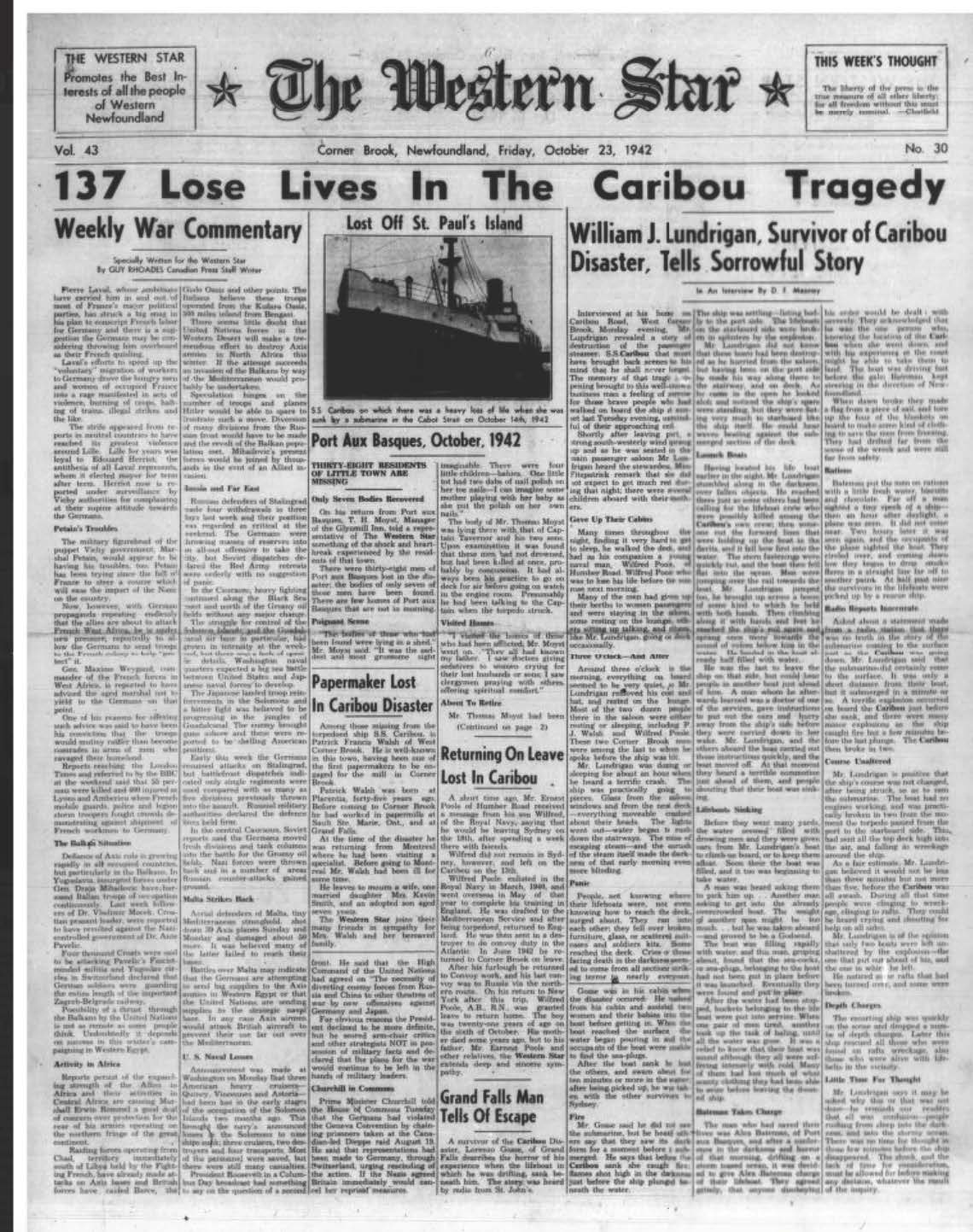

August 24, 1912 - October 14, 1942











William Palmer Howse was the son of Reverend Doctor Charles Howse (d. 1949) and Elfreda (nee Palmer) Howse, of Carbonear, Newfoundland. He was born in Blackhead, Newfoundland. He had three brothers: Reverend Ernest Marshall Howse, Claude R. Howse, and Carl A. Howse, who had enlisted with the RCAF and was overseas by 1943. He had two sisters: Millicent Lena Howse (d.1970), a missionary in Angola, West Africa, and Mrs. Kathleen Williams, of Toronto. Six siblings died as children. The family attended the United Church.
A teacher, he was living in Halifax at the time of his enlistment with the RCAF in the summer of 1941, hopeful to be an armourer (guns). He indicated that he owned his brother $800 as he borrowed the money for his university education. William attended Memorial College (1930-31, 1934-35) and then Dalhousie University (1937-1939) earning a Bachelor of Science degree on May 16, 1939. He taught school with the Department of Education, Newfoundland from 1931-34, then worked as a research worker for Fisheries Research, Newfoundland from 1935-37, then with Marine Products, St. John’s, 1939-40, then returned to teaching through the Department of Education. He also taught in Corner Brook from April to June 1940, and was an accountant’s assistant for two months.
He listed swimming, skating, and skiing as sports he participated in from time to time.
The RCAF accepted William in August 1941. At that time, William stood 5’6” tall and weighed 126 pounds. He had brown eyes and brown hair. He wore glasses for short-sightedness. He told the medical examiner that in 1931, he had gonorrhoea.
William was sent to No. 1 Manning Depot, Toronto mid-August 1941, having taken a train from. Halifax, changing trains in Montreal. The trip took two days. By October 29, 1941, he had grown an inch in height and put on nine pounds while at No. 4 Wireless School, Guelph, Ontario where he was stationed from September 14 to November 29, 1941.
From there he was sent to Air Armament School, Mountain View, Ontario until January 20, 1942 where he completed No. 3 Armourers (Guns) course, finishing 13th out of 69 with a 77.7%. “A good steady worker. Intelligent and diligent. Recommended for an instructor.” His course involved musketry and revolver training.
His next posting was at No. 4 Repair Depot, Scandouc, New Brunswick from January 21 until May 14, 1942, returning to Mountain View. By July 1942, he had completed No. 11 Gunnery Instructors Course, at Mountain View, finishing 5th out of 16 in the class. “He has been a hardworking and enthusiastic pupil and has proven himself to possess good all-round ability as a Gunnery Instructor. He has absorbed and imparted knowledge with equal facility and has been above average in air exercises.” He was assessed as being suitable as an instructor, rated above average, with 76.1%. He was flying aboard the Fairey Battle while on course.
A letter found in William’s files indicate that he was to marry Miss Doris Wellon of Deer Lake, Newfoundland. “She is a young woman of very fine character and ability. She is a very suitable person to become the wife of an Airman. I therefore have no hesitate in recommending her for such,” wrote the minister of the United Church of Canada, Curling, Newfoundland, August 27, 1942.
The night of October 14, 1942 was very dark with no moon. Sixty kilometres off the coast of Newfoundland, the SS Caribou on her starboard side was torpedoed by German U-boat U-106. On board were 73 civilians (eleven children, 118 military personnel) and a crew of 46. The passengers were thrown from their bunks, several lifeboats and rafts were destroyed or could not be launched, as the ship sunk quickly, reports stating only three minutes. Many passengers were forced to jump overboard. Over 135 people perished, including William Palmer Howse. Fifteen of the crew survived, many of them local men from the Channel/Port aux Basque area.
It is unknown why William was aboard the SS Caribou. Was he on his way to be married or on leave to visit family?
In a letter dated October 16, 1942 to Rev. Dr. Howse and Mrs. Howse, F/O Gunn wrote, “It is my painful duty to confirm the telegram recently received by you which informed you that your son, Corporal William Palmer Howse is missing on Active Duty. Advice has been received that your son was on board a ship which was lost at sea, due to enemy action. In the interest of national security, it is requested that you continue to withhold this information until official announcement that your son has been reported missing has been made through the Press. Please be assured that any further information received will be communicated to you immediately. I wish to assure you and Mrs. Howse of my sincere sympathy in your great anxiety.”William’s father was the sole beneficiary of his estate. William had two life insurance policies valued at $1500. His mother was the beneficiary. An inventory of William’s personal effects was made. “We presume he had some little personal belongings. If he left anything at Mountain View, we would like to get them. We don’t know if he had any money in any bank or that he had any War Savings Certificates or Bonds,” his father wrote on the Estates form.
By May 22, 1943, William was officially presumed to have died on October 14, 1942.
In January 1948, a memorial was erected at Port-aux-Basques, Newfoundland, in memory of those who died in the torpedoing of the S. S. Caribou.
For additional information, please click on the links below.
Two of the survivors who had suffered from shock and exposure due to the sinking of the SS Caribou, Aircraftmen Frank Earl Burton, 19, and Frederick Anthon Langley, 23, both airframe mechanics, perished in the fire at the Knights of Columbus hostel in St. John’s, Newfoundland, December 12, 1942. Ninety-nine people were killed, with 80 of them military personnel. Critically wounded: 109.
LINKS: